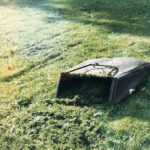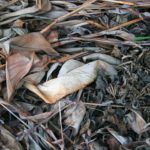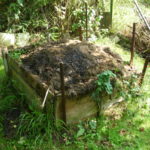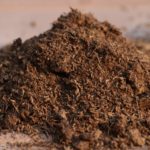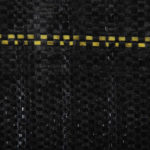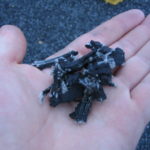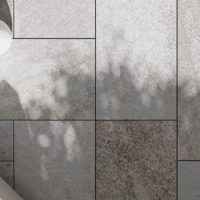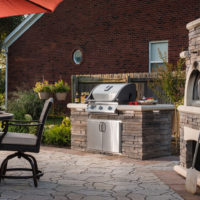 The history of mulching landscape and agricultural areas dates back more than 10,000 years when our ancient ancestors realized the benefits of using mulching products in their gardens and farms. Stone age farmers didn’t have the fancy bark and recycled product mulch materials that we have at our disposal today, but nonetheless they realized the benefit and improvised with available organic materials such as seaweed, rocks, wool and whatever else could be used to benefit their gardens. The ancients were on to something! Mulch is much more than just a pretty face! Proper use of mulching materials will conserve water by regulating soil temperature, break down into valuable organic materials, and provide several other valuable benefits to your garden!
The history of mulching landscape and agricultural areas dates back more than 10,000 years when our ancient ancestors realized the benefits of using mulching products in their gardens and farms. Stone age farmers didn’t have the fancy bark and recycled product mulch materials that we have at our disposal today, but nonetheless they realized the benefit and improvised with available organic materials such as seaweed, rocks, wool and whatever else could be used to benefit their gardens. The ancients were on to something! Mulch is much more than just a pretty face! Proper use of mulching materials will conserve water by regulating soil temperature, break down into valuable organic materials, and provide several other valuable benefits to your garden!
Mulch is beautiful, and it appeals to our senses that landscape designers target. It looks great, creates desired color contrasts, occupies awkward open spaces, and it can even be used to hide imperfections in a landscape. The smell of freshly cut bark mulch in combination with fresh flower blooms resonates a familiar Spring birth smell that has a nostalgic effect. However, the real beauty of mulch goes far beyond aesthetics and provides an advantage to your growing environment that shouldn’t be ignored. Mulching your planting areas will provide the following benefits:
- Retains Moisture in the Soil
- Moderates Soil-Temperature Fluctuations
- Protects Soil from Evaporation Dramatically Reducing Water Usage
- Enhances Soil Fertility (when breaking down into organic matter)
- Reduces Winter Injury
- Inhibits Weed Germination & Growth
- Protection from Erosion, Weed Eaters and Lawnmowers
- Controls Pests & Encourages Earthworms to Move In (Earthworms in garden = Good!)
For all that is good about mulching your gardens, there are a few disadvantages to be aware of. The moist, dark, cool environment that mulch creates is a desirable home for termites, ants, earwigs, and cutworms. Also, be aware that some perennials might bloom later in the Spring because of the decreased soil temperatures. Lastly, some seeds and sprouts can’t germinate without the necessary sunlight and might lack the needed oomph to push through the mulch. To combat these drawbacks, consider using only a thin layer of mulch in problematic areas and keep the mulch material several inches away from plant bases. If you don’t mulch over Winter, wait until plants green up and seedlings are sprouting up before mulching.
Selecting the proper mulching material is important to the success of your garden. Selecting the best mulch depends on several factors such as personal preference, budget, and goals of mulching your garden. If you are looking to improve soil fertility, you’ll want to be sure to choose an organic mulch that will break down and provide nutrition for your garden. The following chart will assist in mulch selection:
| Type of Mulch | Advantages | Concerns |
|---|---|---|
| Grass Clippings
|
Is cheap, readily available, and easy to apply | Decays quickly, so you must replenish often. If you use weed killers on your lawn or nitrogen-heavy fertilizer, it may adversely affect other parts of the garden; can turn slimy if you apply more than an inch or so at a time; if the grass goes to seed before you cut it, the grass seeds can germinate in your garden beds (yikes!) |
| Wood or Bark Chips
|
Looks neat and attractive; stays where you put it; is slow to decay | Pine bark mulch is fairly acidic, which you may or may not want for your garden; if you apply too deeply (over 3″) or apply a deep layer up against tree and shrub trunks, you may create a hiding spot for a bark-damaging rodent, especially during winter |
| Decaying Leaves
|
Smothers weeds very well; helps hold in soil moisture | Is not especially attractive; if it contains seeds, they can germinate and become a weed problem; if the leaves are soft, like maple leaves, the mulch can mat; if it’s acidic (oak especially), it can lower your garden soil’s pH |
| Compost
|
Is free and plentiful if you have your own compost pile; adds nutrients to the soil as it breaks down | Makes a good place for weeds to take hold; fresh compost (especially if it contains manure or grass clippings) can burn plants |
| Peat Moss
|
Looks neat and tidy; is versatile — also functions as a soil amendment | Can be expensive; if dry, will repel water; becomes crusty over time |
| Straw
|
Is cheap and easy to apply | Is so light it can blow or drift away; may harbor rodents, especially over the winter months; isn’t very attractive for ornamental plantings |
| Hay
|
Is cheap and easy to apply | May harbor rodents, especially over the winter months; isn’t very attractive for ornamental plantings; probably contains weed seeds! |
| Gravel, Pebbles, or Stone
|
Has a nice, neat look (though not “natural”); is easy to apply; won’t wash away easily and will last a long time; doesn’t need to be replenished over the course of a season in colder climates | Can allow weeds to sneak through; provides no benefits to the soil |
| Landscape Fabric
|
Keeps weeds at bay; holds soil moisture and warmth in | Watering and feeding is hard (you need to cut openings for plants); can be difficult to apply unless you’re doing an entire area at one time; isn’t very attractive |
| Rubber (shredded recycled car tires)
|
Very long lasting, available in many colors, looks like shredded wood mulch | Can smell strongly of rubber; provides no nutritional benefits to the soil |


